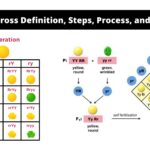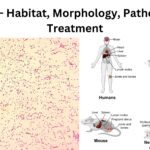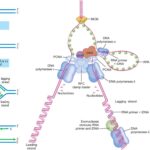IB Biology 30 Views 1 Answers
Sourav PanLv 9November 9, 2024
Draw and label the key structures within a sarcomere.
Draw and label the key structures within a sarcomere.
Please login to save the post
Please login to submit an answer.
Sourav PanLv 9May 15, 2025
To illustrate the structure of a sarcomere and its key components, here’s a description of what you would draw and label on a diagram of a sarcomere, along with an explanation of the function of each part.
Diagram of a Sarcomere
Key Components to Include:
- Z Disc (Z Line):
- Description: The Z disc is a thin line that marks the boundary between two adjacent sarcomeres. It anchors the thin filaments (actin).
- Function: It defines the limits of a sarcomere and serves as an attachment point for actin filaments.
- I Band:
- Description: The light band on either side of the Z disc that contains only thin filaments (actin).
- Function: It represents the area where there is no overlap between thick and thin filaments, contributing to the striated appearance of muscle fibers.
- A Band:
- Description: The dark band that spans the length of thick filaments (myosin) and includes overlapping regions with thin filaments.
- Function: It contains both myosin and actin, playing a crucial role in muscle contraction as it is where cross-bridge cycling occurs.
- H Zone:
- Description: The lighter region in the center of the A band where there are only thick filaments (myosin) without any overlap from thin filaments.
- Function: This area shortens during muscle contraction as actin filaments slide toward each other.
- M Line:
- Description: A line located in the middle of the H zone, consisting of proteins that hold thick filaments together.
- Function: It provides structural support and stability to the arrangement of myosin filaments.
- Thick Filaments (Myosin):
- Description: These are represented by thick lines within the A band.
- Function: Myosin heads interact with actin during contraction, forming cross-bridges that facilitate muscle shortening.
- Thin Filaments (Actin):
- Description: These are represented by thin lines extending from the Z discs into the A band.
- Function: Actin is crucial for muscle contraction; it provides binding sites for myosin heads during cross-bridge formation.
Example Annotation for a Diagram
- Draw two parallel lines representing Z discs at either end.
- Between these lines, draw alternating thick and thin lines to represent myosin and actin filaments.
- Label each component clearly:
- “Z Disc”
- “I Band” (light area)
- “A Band” (dark area)
- “H Zone”
- “M Line”
- “Thick Filament (Myosin)”
- “Thin Filament (Actin)”
0
0 likes
- Share on Facebook
- Share on Twitter
- Share on LinkedIn
0 found this helpful out of 0 votes
Helpful: 0%
Helpful: 0%
Was this page helpful?




